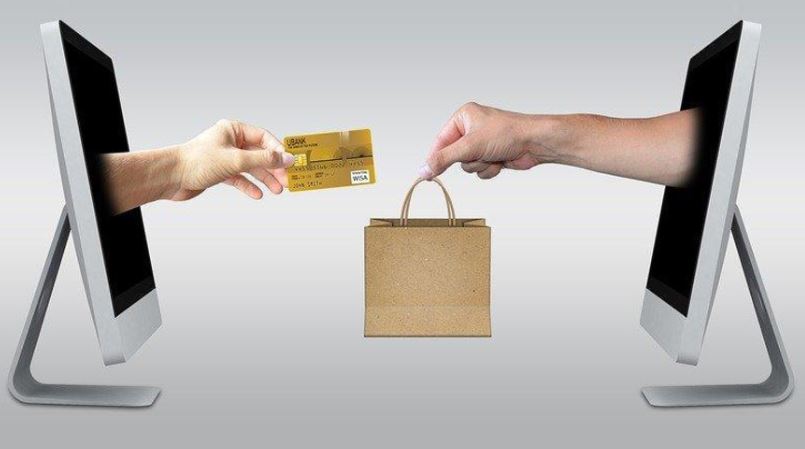Payment trends in Ecommerce - buying online on credit?
Buying online on credit is not new. However, this service has always been linked to sky-high interest rates and the associated debt problems. Thanks to 'cheap money', buying now and paying later seems to be on the rise. It is not the consumer who pays for the costs, but the webshop. This has the advantage that customers can make purchases more easily. Buying on credit therefore seems to be one of the most important payment trends in Ecommerce.
As a web shop, you set up the processes in such a way that your customers pass the final stage of their Customer Journey comfortably and with confidence. Also the checkout formalities should be as pleasant as possible. The fewer obstacles the customer experiences, the easier the purchase will be concluded. How do you remove the last doubts about a purchase? By offering the option of only paying when the customer has received his order and is completely satisfied.
5 key payment trends in Ecommerce
Het optimaliseren van betaalprocessen is cruciaal voor het succes van je E-business. Met alleen iDeal, hoe groot en belangrijk ook in Nederland, ben je er niet. Dus zagen we de afgelopen jaren een groot aantal betaaltrends in Ecommerce langskomen. We zetten ze op een rij.
- Mobile payment - Customers are increasingly buying on the go. Payment procedures (the 'payment page') are increasingly adapted to this. The most important requirement is maximum user-friendliness.
- International payments - Dutch people buy at non-Dutch webshops and Dutch webshops are attracting an ever-widening international public. Keep this in mind. Make it possible to pay with credit cards and PayPal. Get to know the preferences of your European customers.
- Gift vouchers/vouchers - Consumers still like to give each other gift vouchers. Fashion vouchers are especially popular. By making payment with gift vouchers/vouchers technically possible, you increase the chance of conversion.
- Pay on delivery - An increasing number of retailers offer the option of ordering online and paying on delivery. What few web entrepreneurs know is that the Dutch consumer has a legal right to this, except for digital products.
- Postpayment - Ecommerce is taking this a step further. An increasing number of payment services (Payment Service Providers) offer this option. The advantage: you lower the threshold to order considerably.
Klarna: the retailer pays, the customer benefits
Next level shopping. That's how tech company Klarna calls the Shopping Experience with the Klarna app. With this app, consumers can choose to pay immediately or deferred, up to a maximum of thirty days after the purchase. It costs the consumer nothing extra. Because the retailer pays with a modest percentage of the purchase amount.
Incidentally, this doesn't seem to be a hindrance at all, as more and more online shops are implementing the app via a payment button on their product pages and on their social media channels. The Swedish fintech company, founded in 2005 and holding a banking licence, has been exporting its online payment platform since 2020. from Brussels in Europe. Major players such as Zara, Ikea and H&M are customers.
In the Netherlands, the principle of online shopping on credit is mainly known from AfterPay. In contrast to the Klarna app, AfterPay offers the consumer a little less freedom. It works via direct debit or one-time authorization and many online shops charge extra costs for the after-payment service. This can vary from 95 eurocent to two euro. Moreover, there is an order limit. AfterPay is comparable to PayPal.
Regulators also follow payment trends in Ecommerce
With the increase in the ability to pay later, concerns about getting into debt are also increasing. As a result, various governments are studying whether stricter rules are needed for the Ecommerce prepayment economy. In the UK, Klarna has already come under fire for advertising the payment platform a little too enthusiastically via influencers. The strong point of Klarna is that the consumer is not charged any interest. This means that it is not a credit company in the old-fashioned sense of the word and that regulators have little grip on these payment trends in Ecommerce.
The possibility for online shoppers to pay after delivery not only offers extra convenience, it also increases confidence in the webshop. After all, if a shop allows you to pay only when you have received your order and are satisfied with it, it must be a bona fide web shop. If you pay in advance, are not satisfied, and return your order, you just have to wait and see when you get your money back. So buying on credit, without paying interest, is one of the payment trends in Ecommerce that you'd better keep an eye on. The temptation to buy increases, thresholds fall away. Conclusion: better conversion and more turnover. And that is always worthwhile for a independent advice.


